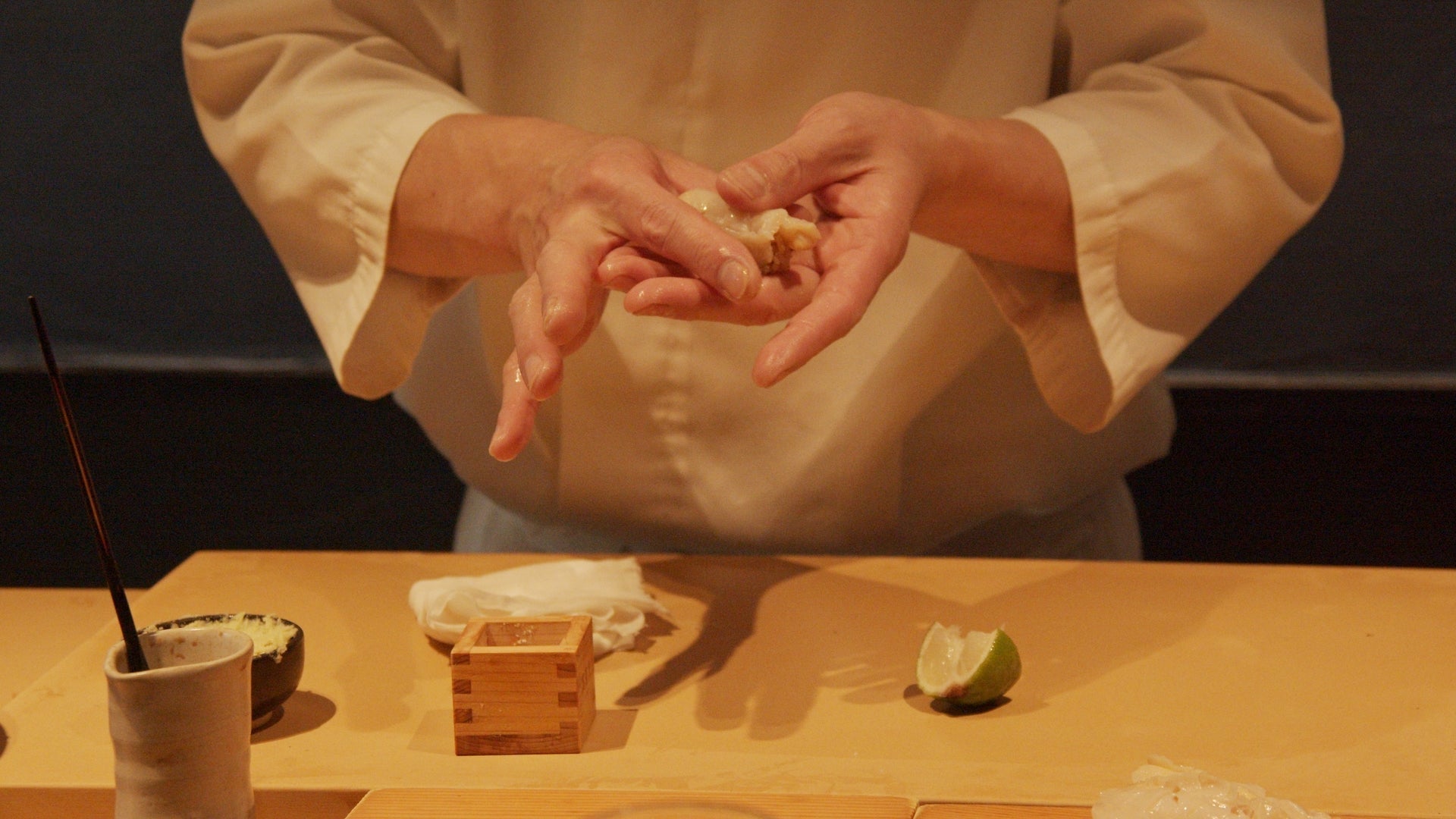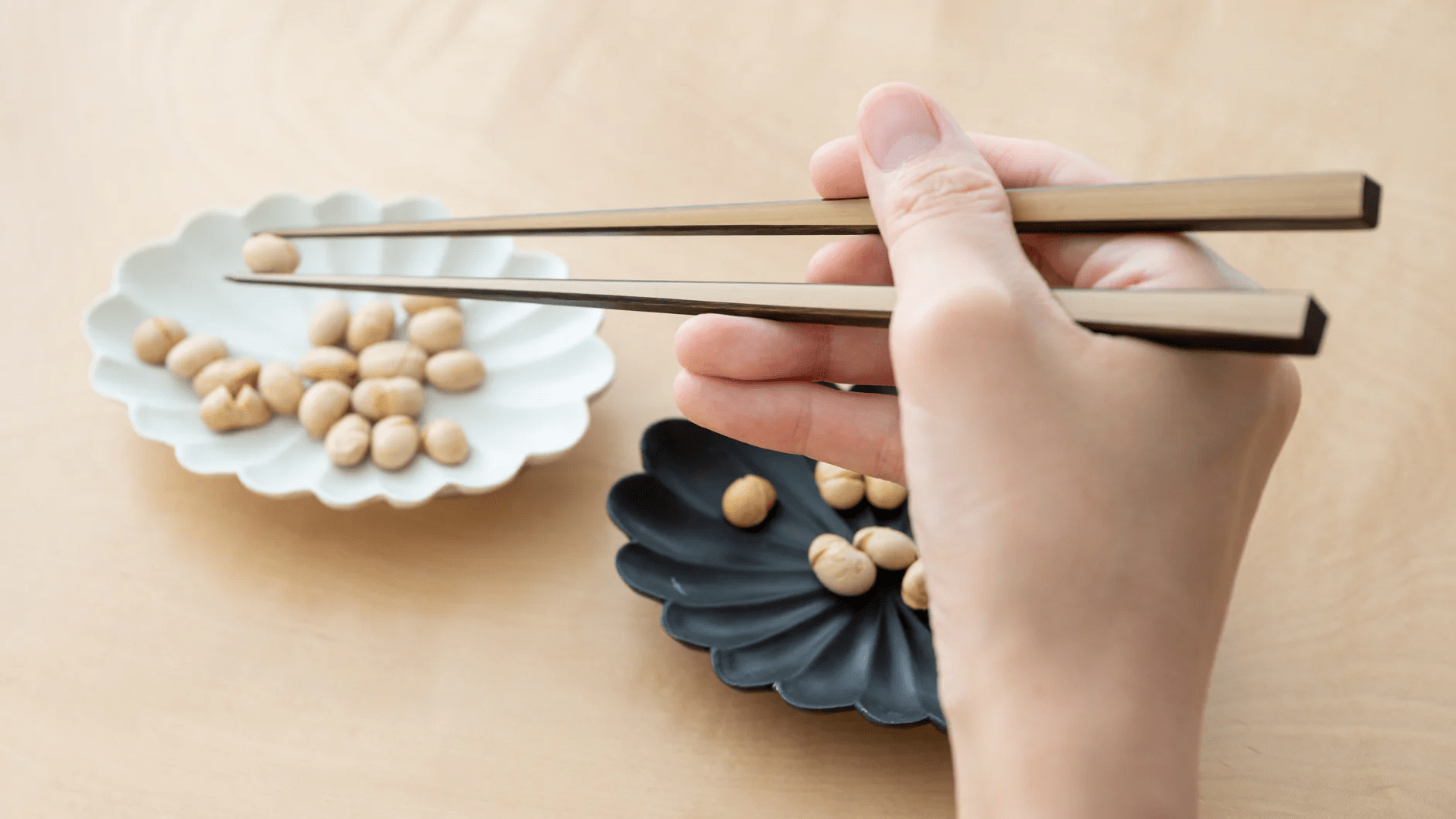
Tasting Toyama at Sushi Jinjin
Written by Team MUSUBI
Two of my good friends lived in Toyama before returning to the States, so this was not my first, second, or even third trip to Toyama. I’ve been to Toyama several times before this business trip, so I thought I was fairly familiar with it.
I was wrong.
Among the things I hadn’t explored on previous trips was the high-end food available throughout the prefecture. For example, the Michelin-starred Toyama restaurant SushiJin, run by self-taught, late-bloomer Chef Kimura Izumi. At 29 he decided to pivot into sushi, an industry where people usually begin their training much younger, and, in part, it is this unconventional path to mastery that helps make his creations so unique. The other part is that he serves up Tokyo-style sushi omakase using Toyama-local ingredients.

After a hot summer’s day of traveling around Toyama Prefecture, we of Team Musubi pulled up to the counter to try the omakase for ourselves, along with a chilled glass of IWA sake , and chat with Chef Kimura.
table of contents
A Chef’s Global Journey

And part of his mastery is the ability to make anyone feel at home, even when he’s far from home. “My identity is in Toyama. But I don't force that onto others, I go to that country and feel the culture of that country and make it my own.” This is partially due to the fact that many countries have import restrictions that limit the amount of Toyama-local ingredients Chef Kimura can pack, but he tries to bring some Toyama with him wherever he goes. He explains, “It's really important to link the story, why we do this. Toyama has done it this way, but this country is like this, so we will do it this way.”

The Kimura Connection
But there’s also a sense of connection to the ingredients: “I always treasure fish, but it's not like we're begging for fish, the fish chose me, if you like. The fish that came today didn't go to Ginza or Kanazawa, they came to me.”

It even goes so deep as the shop he has chosen to open his second location in, which is deeply entrenched in Toyama’s history. He told us that when surrounding buildings were burned down in the air raid on Toyama in 1945, this building was the only one left standing. And it’s in that history that he has found an alignment with his values: “80 years ago it was all that was left. How can I be an artist with that? I can tell you one thing: I will use what remains… Why do these things remain? Because they want to carry on.”

And it’s not just the sake that impresses him, he explained, “Richard and Charles(-Antoine Picart, CEO of Shiraiwa KK), are always challenging themselves, and in the end, the answer is that we too must continue to challenge ourselves, and have the ambition for cooking so that we will not be defeated.”

“Don’t we dream a lot of the same dreams? It’s like the brain creates a screenshot when you properly throw yourself into something. I have to keep telling myself I want something… I own a few of my own companies but sometimes there is work I can’t figure out in the moment. So I tell myself, ‘Izumi, please take care of this for me,’ so even when I’m sleeping I’m thinking about it, and that’s how I move forward. That’s my inspiration. Also, nature.”

In the meantime, I will keep dreaming about the incredible omakase we experienced.
Covering the Courses
In order to give you, the reader, the slightest idea of the innovation and variety you can expect when booking the omakase at Standing Sushi JinJin, I wrote down everything we ate. As it was a hot day, I limited my drinking to only a single glass of Assemblage 2, but it was all I needed to round out the experience. The smooth, chardonnay-like taste of the sake went well with the meal, which I found leaned sweet due to the use of local red rice vinegar—but never overwhelmingly so.
Course 1: Fried aji “horse mackerel”, handed to us in a paper sleeve a la fried chicken.

Course 3: Bleu cheese chawanmushi, a steamed egg dish


Course 6: Toyama shrimp, shabu shabu-style
Course 7: Kawahagi temaki “Filefish in a hand roll”
Course 8: A rice bowl featuring my three favorite seafoods: Kani, uni, and ikura “Snow crab, sea urchin, and salmon roe”

Course 10: Squid nigiri
Course 11: Snow crab nigiri

Course 13: Unagi, eel, grilled and served with an ash salt made from the ash of a rice container [Note: it was during this course that my colleague informed me of a holiday called Doyo-no Ushi-no Hi, which was July 30th this year, on which people eat eel to renew their vitality in the summer heat.]

Course 15: Spring roll
Course 16: What the chef calls fish espresso, which changes from day to day as it’s a blend of the parts of fish he can’t use otherwise
Course 17: Nodoguro, “blackthroat seaperch”, which is a signature of Hokuriku. Grilled and skewered with negi “green onion”

Course 18: Monaka, which is essentially ice cream fully encased in an ice cream cone-like wafer. Ours featured salted ice cream, which was the perfect way to end our long, hot day in Toyama.
If you find yourself in the Hokuriku area, make sure to stop by Toyama for a reservation at one of the best restaurants in Toyama, Standing Sushi Jinjin, just a short taxi ride away from Toyama Station. Not only will you experience an incredible course meal made of local ingredients, accented by conversation with an energetic chef, but you can also try the sought-after IWA 5 sake and get the full Toyama experience.
Standing Sushi Jinjin
3-8 Ichibanmachi, Toyama









Leave a comment
This site is protected by hCaptcha and the hCaptcha Privacy Policy and Terms of Service apply.